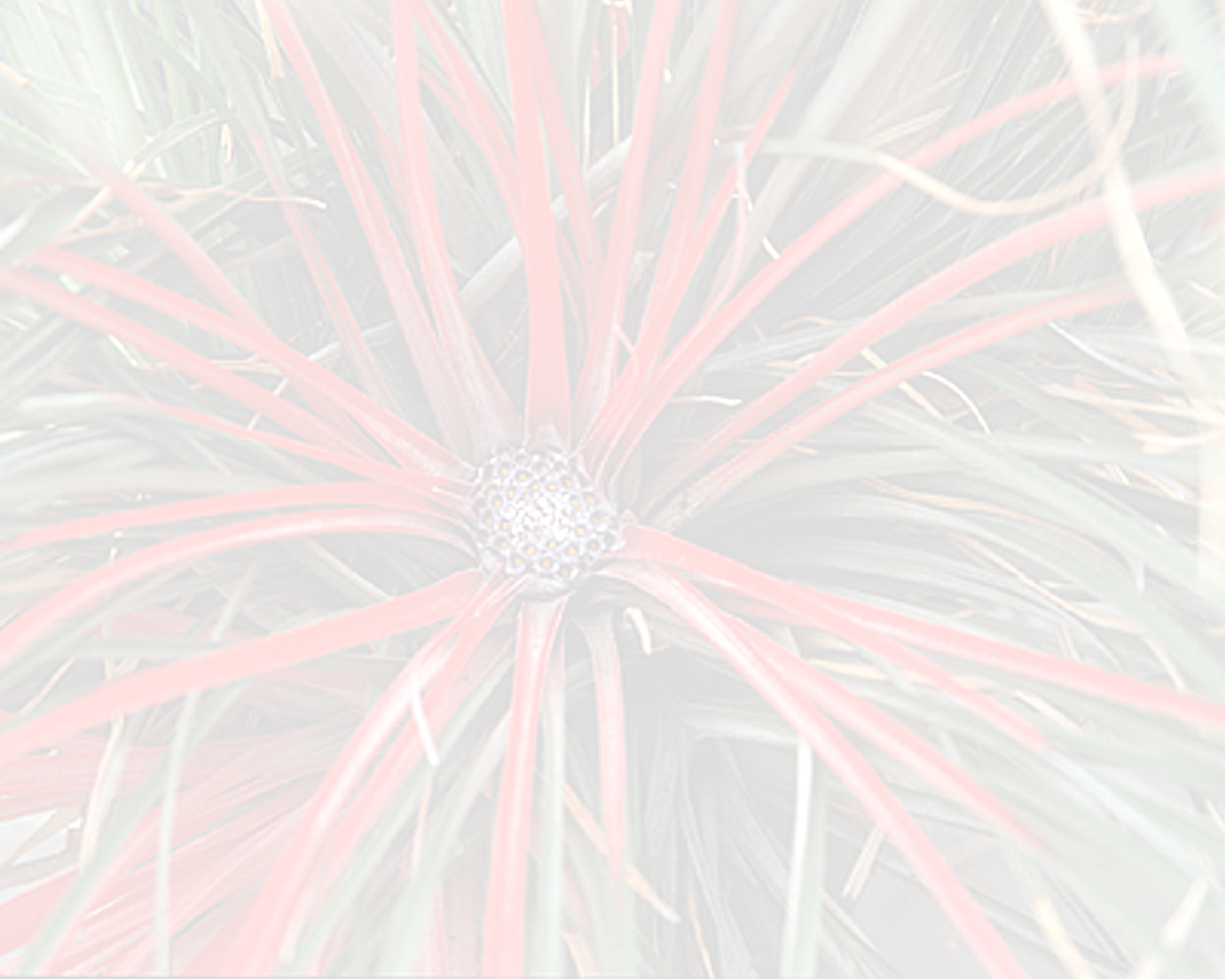Fascicularia bicolor (Ruiz & Pavon) Mez
Literature references:
*move your mouse pointer over the page numbers to see comment
Comments:
- W Weber in J Brom Soc 34: 268-9. 1984
During the examination of the Bromeliaceae of the Wroclaw-Herbar (WRSL -formerly Breslau/Silesia) I had occasion to study two different specimens of F. bicolor. The first, collected by R. A. Philippi, no. 204, was labelled, "Chile: prope Valdivia, Bromelia albobracteata Steud. Flos terminalis, flosculi pallide azurei, in arboribus et rupibus Maio m. 1852." The second specimen collected by Lechler, no. 343, was labelled, "Chile: in provincia Valdivia Dec."
From the Philippi no. 204 I have prepared the accompanying drawing (fig. 11) with detailed flower analysis:
Fig. 11 A, Habit - illustrating only the inner leaves with the inflorescence. Complete plants have many more leaves forming dense rosettes of about 1 m in diameter.
Fig. 11 B, Sheaths - showing the interesting shape of the sheaths of the inner leaves. The margins are biconvex embaymented and the higher parts of the sheaths again becoming wider. They are very densely serrate. With the transition in the long, tapering, linear-triangular blades the spines of the margins become smaller and more distantly arranged.
Fig. 11 C, Inflorescence - showing its involucrate outer bracts and gradually reduced blades. A scape in the true sense is missing or severely shortened so we can also call the extreme inner leaves, or outer bracts, scape bracts.
Fig. 11D, 11 E. Flower bracts - are more stiff in texture and join about the middle of the sepals (fig. F). The anterior sepal is ecarinate, but the posterior ones are very strongly alate-carinate and these wings are continued to the ovary (vide cross-section on the left).
Fig. 11 G. Petals - are relatively small and of stiff texture.
Fig. 11H. Ovary - with the large epigynous tube is more than half as long as the complete flower. —See Philippi 1860
- Illustrations. Morren (1873: pl. 14); Wright (1906: pl. 8087), Munoz (1966: pl. 28) (the figures listed here could not be assigned without doubt to one of the subspecies).
Chile, region V to region X.
Discussion. Three combinations in Rhodostachys (R. bicolor, R. joinvillei, R. pitcairniifolia) are ascribed here to Bentham (in Bentham & Hooker, 1883) (contrary to the opinion of Smith & Downs, 1979), although two of the new combinations do not explicitly appear in the text. Citation of the basionyms with the place of publication (indirectly for B. bicolor) under the genus Rhodostachys, with a short diagnosis and the remark "Species editae 6 v. 7, . .. quarum nobis adsunt 3. . . ." (Bentham & Hooker, 1883: 662), is regarded as sufficient for valid publication.
The three combinations published by Mez in Martius (Fl. Bras. 3,3: 627, 1894; F. bicolor, F. pitcairniifolia, F. litoralis) are not validly published, for the citation of the basionyms without authors does not fulfill requirements for indirect reference to a previously published description or diagnosis (ICBN, art. 32.5).
The differences in geographical distribution (Fig. 2), habitat and leaf morphology (the latter was observed to be constant in cultivated material), led us to assign to the two groups the rank of subspecies.
1. Leaves succulent especially toward base, adaxial (upper) surface flat, margins not recurved, blade (1.0)1.2-1.8(-2.2) cm wide. . . . . . F. bicolor subsp. bicolor
1 * Leaves not markedly succulent toward base, adaxial (upper) surface distinctly channelled, margins distinctly recurving, blade (0.6-)0.8-1.1(-1.4) cm wide . . . . . F. bicolor subsp. canaliculata —See Zizka et al. 1999a

